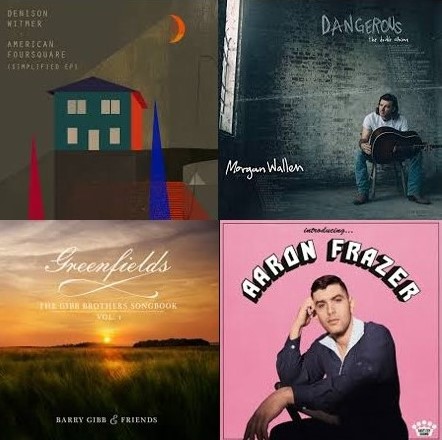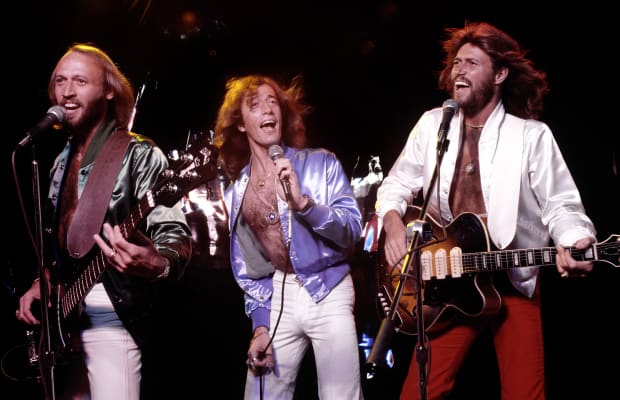Another Sunday is upon us and I hope everybody is feeling groovy. It’s time again to embark on another trip to visit music from different decades and in different flavors, six tunes at a time. Let’s do it!
Lou Donaldson/That Good Old Feeling
Our first stop today is June 1957, which saw the release of Wailing With Lou, a studio album by Lou Donaldson. The American jazz alto saxophonist who is now 96 years officially retired in 2017 after a 64-year career as an active performer. Here’s an excerpt from the bio on his website: Jazz critics agree that “Sweet Poppa Lou” Donaldson is one of the greatest alto saxophonists of all time. He began his career as a bandleader with Blue Note Records in 1952 and, already at age 25, had found his sound, though it would continue to sweeten over the years — earning him his famed nickname –“Sweet Poppa Lou.” He made a series of classic records for Blue Note Records in the 50’s and takes pride in having showcased many musicians who made their first records as sidemen for him: Clifford Brown, Grant Green, Blue Mitchell, Donald Byrd, Ray Barretto, Horace Parlan, John Patton, Charles Earland, Al Harewood, Herman Foster, Peck Morrison, Dave Bailey, Leon Spencer, Idris Muhammad, and others. Coming back to the above-mentioned album, here’s the beautiful Donaldson composition That Good Old Feeling. The recording featured various of the above-listed jazz musicians, including Bryd (trumpet), Foster (piano) and Morrison (bass), along with Art Taylor (drums).
The Blasters/Crazy Baby
After having been eased in with smooth jazz, let’s visit 1980 and pick up the speed with great music by The Blasters. I first read about this American roots rock band on Cincinnati Babyhead’s blog. Formed in Downey, Calif. in 1979 by Phil Alvin (vocals, guitar) and his brother Dave Alvin (guitar), together with John Bazz (bass) and Bill Bateman (drums), the group had an initial 6-year run before they first broke up. Various incarnations of The Blasters have since been led by Phil Alvin who together with Bazz has been the only constant member. The current line-up also includes cofounder Bateman who rejoined in 2008. Crazy Baby, co-written by Ron Volz and Ron Wemsman, appeared on the band’s 1980 debut album American Music. It’s got a cool retro rockabilly vibe!
Bee Gees/To Love Somebody
Time to go back to the ’60s and a beautiful early song by the Bee Gees. Co-written by Barry Gibb and his brother Robin Gibb, To Love Somebody first appeared in June 1967 as the second upfront single of the group’s international debut studio album Bee Gee’s 1st, which came out in July of the same year. Prior to that, they had released two albums in their native Australia only. To Love Somebody reached no. 17 in the U.S. on the Billboard Hot 100 and no. 49 on the UK Official Singles Charts. Ten years later, the Bee Gees would rule the charts in both the U.S. and the UK, as well as many other countries with their no. 1 soundtrack album Saturday Night Fever, which spawned multiple no. 1. singles. Oftentimes, the Bee Gees are associated with the disco era, but early songs like To Love Somebody show there was much more to the group. You can read more about the Bee Gees in my four-part series from December 2020 here, here, here and here.
Cordovas/High Feeling
Now, let’s set our music time machine to the current century, more specifically to October 2020. That’s when Americana and country rock band Cordovas released their third full-length studio album Destiny Hotel. The four-piece group from East Nashville, Tenn. first entered my radar screen in the summer of 2018 when I caught them during a free concert in a park not far from my house. Their multi-part harmony singing proved to be an immediate attraction. So was their sound that reminds me of bands like Crosby, Stills, Nash & Young, The Band, Grateful Dead, Eagles and Little Feat. Led by bassist Joe Firstman, Cordovas have been around for more than 10 years. Here’s the album’s opener High Feeling. These harmony vocals and the warm sound are right up my alley!
Pink Floyd/Us And Them
This past Wednesday marked the 50th anniversary of The Dark Side of the Moon, one of my favorite Pink Floyd albums, an appropriate occasion to go back to March 1, 1973. Developed during live performances before work in the studio began, the eighth studio release by the British psychedelic and progressive rock band was a concept album revolving around dark human themes, such as conflict, greed, time, death and mental illness. One of the most critically acclaimed albums of all time, The Dark Side of the Moon is a sonic gem that not only represents one of the peaks in Floyd’s recording career but also a highlight in sound engineering provided by Alan Parsons. It catapulted Pink Floyd to international stardom and perhaps somewhat ironically made its members pretty wealthy. For more on this album, you can read an excellent recent post by fellow blogger Bruce from Vinyl Connections. Us And Them, composed by Richard Wright with lyrics by Roger Waters, became the album’s second single in February 1974 after Money from May 1973. A reissue, The Dark Side of the Moon 50th Anniversary, is set to appear on March 24. Among others, the box set includes remastered edits of the studio album and The Dark Side of the Moon Live at Wembley 1974.
Son Volt/Route
And once again it’s time to wrap up another musical journey. For the last stop, our time machine takes us to September 1995. Alternative country and Americana rock band Son Volt first entered my radar screen in July 2021 when their most recent studio album Electro Melodier appeared. Singer-songwriter and guitarist Jay Farrar formed the group in 1994 after the breakup of Uncle Tupelo, another alt. country outfit he had co-founded in 1987. To date, Son Volt have released 10 albums. Apart from Farrar, the current members include Chris Frame (guitar), Mark Spencer (keyboards, steel guitar), Andrew DuPlantis (bass) and Mark Patterson (drums). Route, penned by Farrar, is a nice crunchy rocker off their 1995 debut album Trace. It’s got a Neil Young and Crazy Horse vibe, which in my book usually is a great thing!
This post wouldn’t be complete without a Spotify playlist that includes all featured tunes. I gladly oblige and hope there’s something you dig!
Sources: Wikipedia; Lou Donaldson website; YouTube; Spotify


